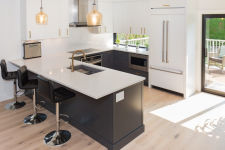Found this picture and got a little confused

They're showing receptacle at the bottom of the kitchen peninsula as required since the peninsula acts as a room divider
Is that actually true?
Will I need to provide a receptacle there with 10 inch overhang?

If yes, can it be a part of small appliance circuit since I can't act that area other than as a dining area.

They're showing receptacle at the bottom of the kitchen peninsula as required since the peninsula acts as a room divider
Is that actually true?
Will I need to provide a receptacle there with 10 inch overhang?

If yes, can it be a part of small appliance circuit since I can't act that area other than as a dining area.



